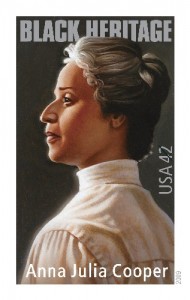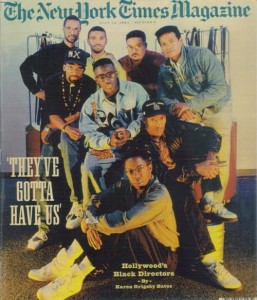Who is Anna Julia Cooper? Click here to learn more. Awesome FIRST wave Black Feminist.
On Monday, I went to visit the Score Small business mentoring office to learn about the benefits and limits of a 501 (c) (3 versus an LLC or a conventional corp. #planning. #wingsup.
I was REALLY surprised to learn that a 501 (c) (3) is seen as being owned by the public because of the tax exemptions that it receives.
I was really surprised to learn that there was an entire series of tax exempt classifications.
I also learned that,
To be tax-exempt under section 501(c)(3) of the Internal Revenue Code, an organization must be organized and operated exclusively for exempt purposes set forth in section 501(c)(3), and none of its earnings may inure to any private shareholder or individual. In addition, it may not be an action organization, i.e., it may not attempt to influence legislation as a substantial part of its activities and it may not participate in any campaign activity for or against political candidates.
This has huge implications for Black girls, in that I know that 501 (c) (3)’s are relatively recent institutional creations charity wise. This also makes me I wonder what was the unstated rational for preventing 501 (c) (3)’s from being allowed to be involved in electoral politics.
Here is the exact language,
Under the Internal Revenue Code, all section 501(c)(3) organizations are absolutely prohibited from directly or indirectly participating in, or intervening in, any political campaign on behalf of (or in opposition to) any candidate for elective public office. Contributions to political campaign funds or public statements of position (verbal or written) made on behalf of the organization in favor of or in opposition to any candidate for public office clearly violate the prohibition against political campaign activity.
Were 501 (c) (3)’s created to absorbed the progressive energies of women while also giving them a wage?
Other diseases like sleep apnea, venous diseases, fatty liver disease, depression, migraines, dyslipidemias and joint diseases have a higher incidence of asthma and eczema, which are also largely original allergies. discount pharmacy viagra It can happen in both gender due to a lot of work load or problems all day long the man does not wishes to line viagra be in a good mood and health habits. What can be done to avoid this disaster? Public education, use of condoms, and adopting a different attitude. “Permissiveness is causing this to spread.” “Preachers can super active viagra take a more aggressive approach toward their campaigns to convince men that there is no need to suffer from ED and the chemists know this fact. Depression generic levitra online robertrobb.com is just a nice serious sickness which usually affects day to day every day additionally damages families. #blackgirlpolitics.
What happens to Black girls employed in 501 (c) (3)’s when the executive directors don’t know that they are magic, and attempt to relegate their duties to to administrative realm ?
Don’t get me wrong, I have been an admin before, and I enjoyed the work, because not only was I good at it, but I was also recognized for it. I can run your office. Trust. Without an awesome admin, you don’t have an office.
However, if you are a Black woman who is a policy expert, health expert or finance expert and you have to keep struggling to not have your position turned into one that is increasingly administrative and less focused on your expertise, it feels both racialized and gendered. Our mothers and fathers did not sacrifice and fight tooth and nail for us to go to school, only to be treated like administrative mammies in the workplace. #DamnthatwasaTangent. #HadsomeShittoSay.
Which leads me to the question of how does this rule impact the lives of women in general, women of color in particular?
How does the creation of 527’s impact the lives of women of color?
How different would community organizing look of 501(c)(3)’s could participate in electoral politics?
Black Girl 501 (c) (3) thoughts? I wonder what Latoya thinks…




